This post may contain affiliate links, which means I'll earn a small commission if you purchase something through these links. You won't pay any extra; instead, you'll be helping Aloha With Love to thrive. Thank you! Learn more.
--
Mom has been growing daikon (white radish) for many, many years right in our yard. We doubted daikon would grow well in my aquaponic systems (both Japanese and Korean), but decided to try it out anyway. Turns out, they grow extremely well in aquaponics! Here’s how I grow these root vegetables so they’re straight and easy to cook.
Aloha with love,
Amy

Growing daikon in the ground
According to Mom who has been growing daikon for years, all they need is some soil and water when grown here in Hawaii. They easily grow between 1 – 2 feet in length and it’s so much fun to watch them as they get noticeably bigger and bigger every day.
Japanese daikon are relatively available at almost all of the local grocery stores and farmers’ markets here, but we rarely see them as big as the ones we grow ourselves. At our local Foodland, they’re $2.89 a pound ($2.59 with the Maika’i Card) so it’s convenient enough for us to grow ourselves.
Korean daikon are harder to find, but you’ll see them at Palama Supermarket (local Korean grocery). They also sell young daikon leaves, which can be pickled for kimchee or used in other Korean dishes.


As an Asian-American family (Japanese and Chinese – Mom’s family immigrated to Taiwan), we eat a lot of daikon. Daikon recipes we most often prepare are:
- Clear and simple soups
- Miso soup
- Daikon cake
- Daikon kimchee
- Pickled daikon leaves (Dad’s favorite)
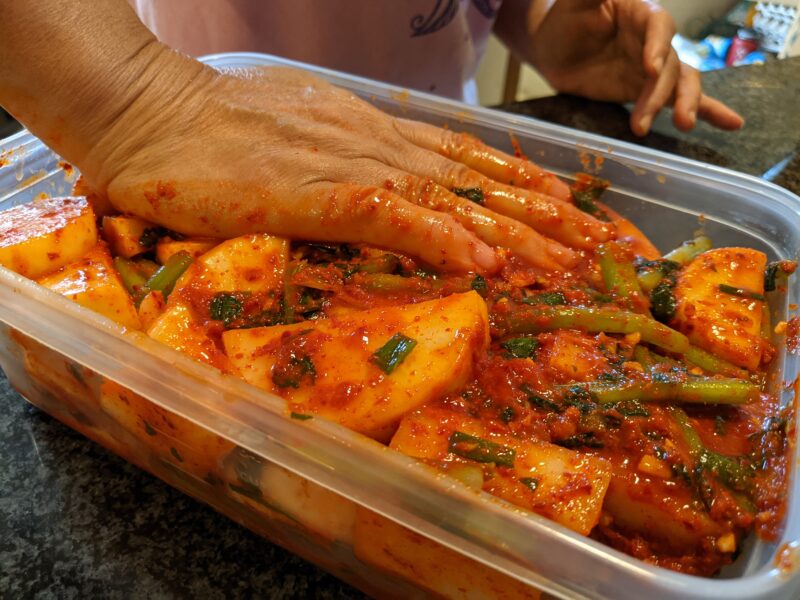
Daikon seeds
Over the years we’ve migrated from seed to seed and brand to brand, but right now these are the ones we currently use. Our favorite by far are the seeds on the left in the picture below. These are Korean daikon seeds and were purchased from Palama Supermarket. Their speedy growth and size easily gives you the biggest bang for your buck.
In the middle is a smaller Korean daikon also from Palama Supermarket that grows more tender leaves. According to an older Korean aunty with broken English at the store, she let us know that if you want to use daikon leaves in your cooking, these are the best ones.
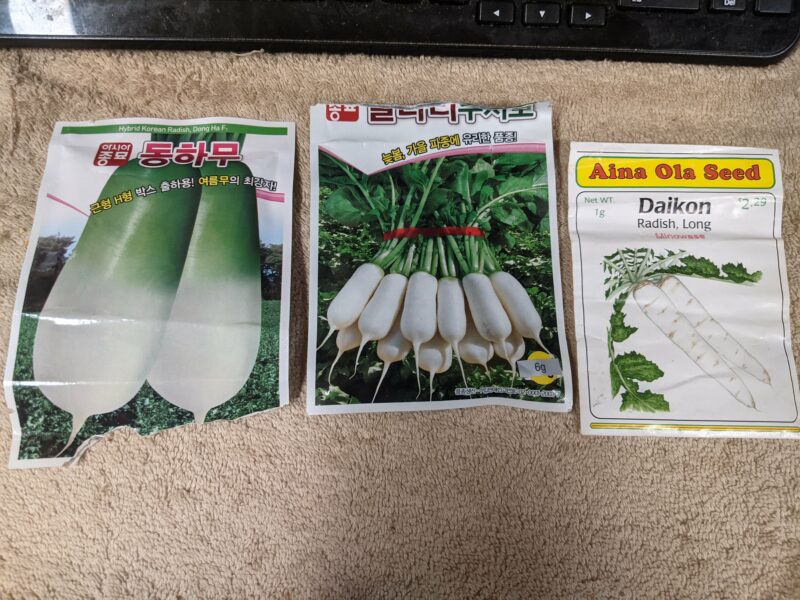
For the long Japanese daikon, we use seeds from Aina Ola or Fukuda (not pictured). Both are local seeds in Hawaii, which is always a plus since local seeds generally fare better than seeds from the mainland and aren’t used to our weather.
You can buy local seed packets from a variety of gardening stores and other companies such as City Mill and Wal-Mart. They sell out fast though so keep an eye out for them in the beginning of the grow season.
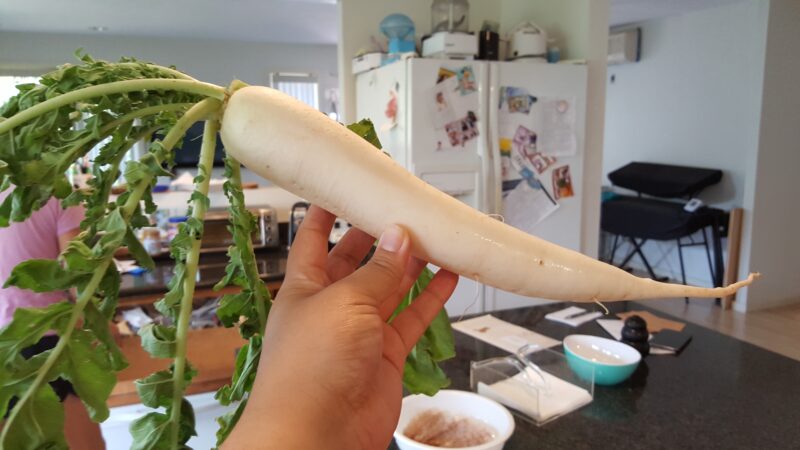
Growing in aquaponics
Growing daikon in aquaponics with black lava rock as a media is easy. The seeds go in about an inch deep and sprout in a couple of days. I cut the tops off of water bottles and cover the sprouts for as long as possible because I’ve noticed that the birds will sneak down and peck at the leaves until the stems are broken, killing the plant.
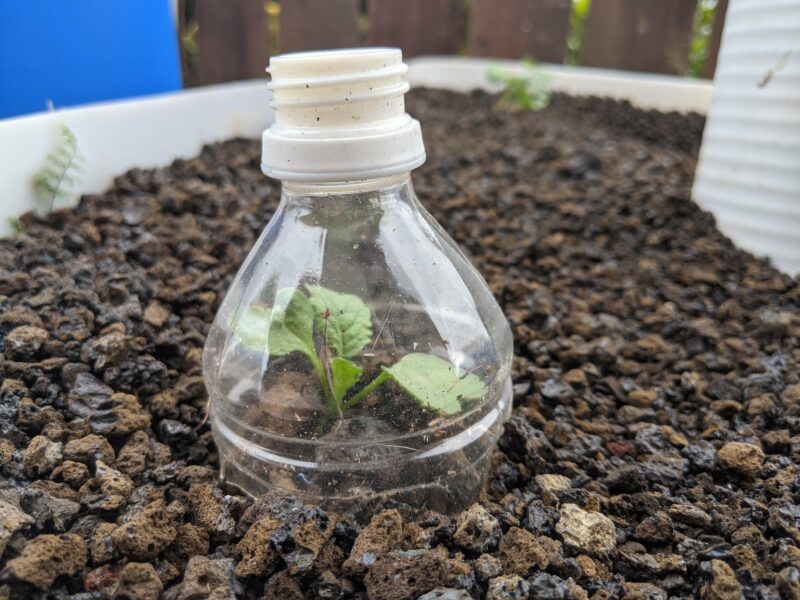
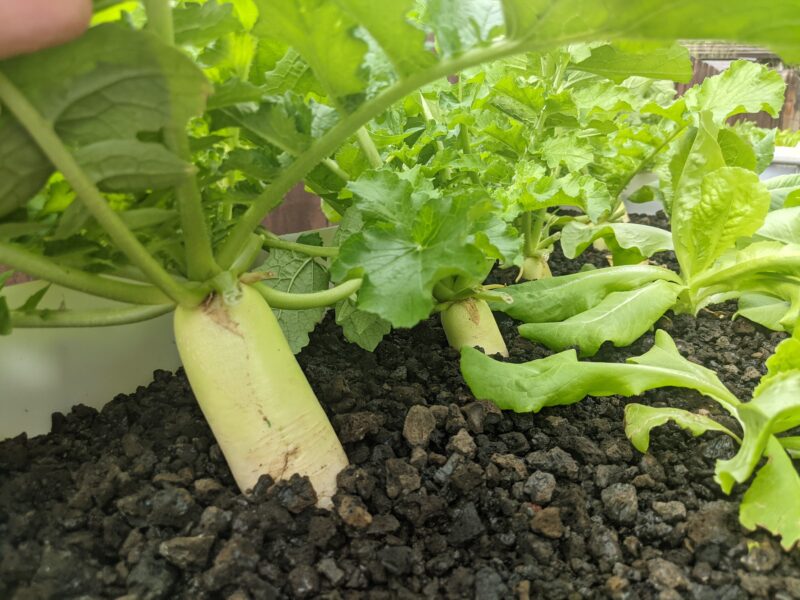
Initially I started planting 3 daikon in a row in my IBC setup, but some of them would split and grow into abnormal shapes. Now I stick with planting only 2 in a row which allows the leaves to grow as wide as they possibly can without touching each other. So far, this has resulted in straight daikon at harvest time.
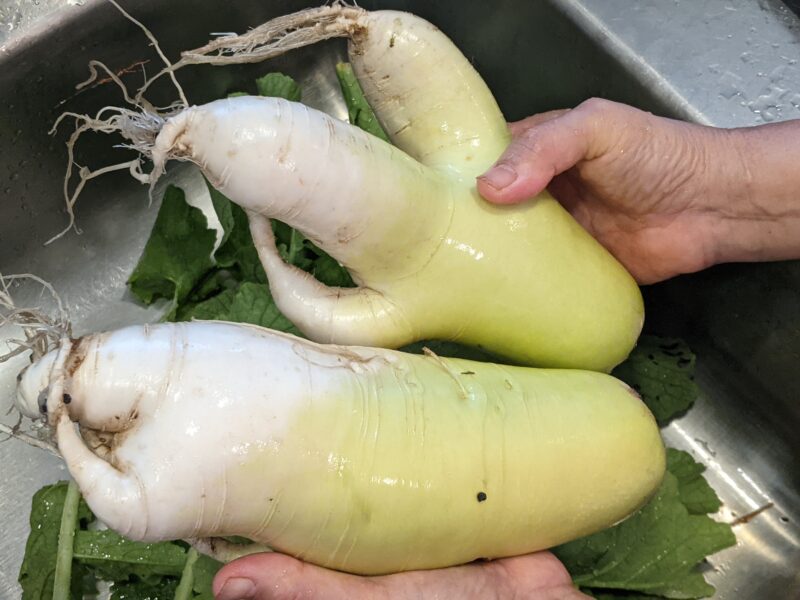
Soil or aquaponics?
Personally, I think both are about the same. As long as you remember to water it, you don’t really need to care for it too much. Just provide them with full sun and enough space and you should be good.
I have noticed that the daikon grown in the soil do grow a bit faster and larger than the aquaponic ones. But I suspect this has more to do with the lack of certain nutrients in my system. I’m still fiddling with adding in nutrients since I’m still learning, while the soil in Mom’s garden is extremely rich with years and years of compost and red wrigglers.
If you have an aquaponics system that’s at least a foot deep, I’d recommend trying to grow your own daikon at least once. It’s really hard to “mess them up” and your harvest will be extra impressive next to your leafy vegetables like bok choy or lettuce.
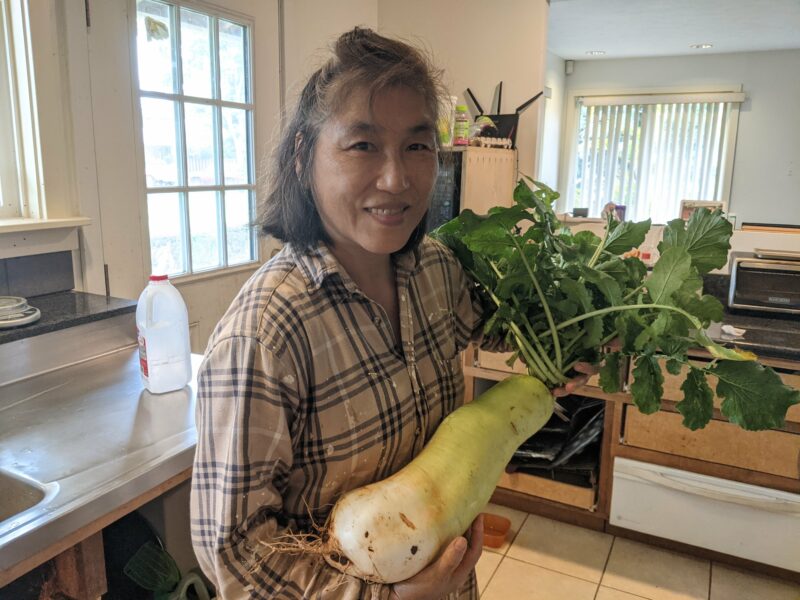

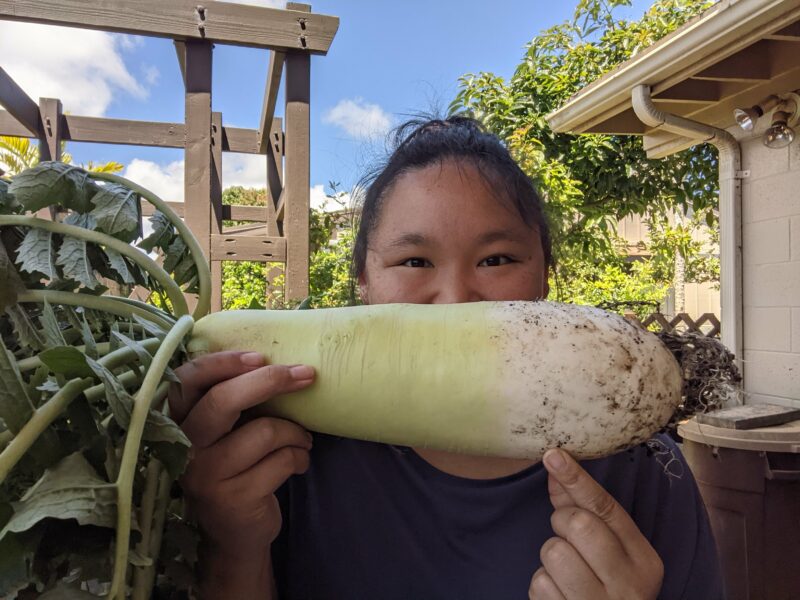
Grovey kind of taste ‘ 😋 as a kid eating white rice from the fields of dreams “” its been years ‘ long time ago ” just ‘ a recent ‘the cup s of yee yee ” just a street TV played on view ” this had to be the messed ‘ like eating heart ‘ had to cup over filled with “”” planted in the alley ” some peek ” some kick open ” then discover ” something white ” sloid huge ‘ grown inside a coffee cup ‘ that was filled with Joe * coffee ☕ that’s ” more interesting as yee ‘ rember this ” that came out of ” yee yee ” like a mirror image of me ” the fart of ‘ smell of ” the really funny ” its really good too ” out of this earth ” had to come from the universe ‘ amen ” that’s e t for a Lil doc ” time machine ‘ bring yee yee back to 2023 ‘ Jan 17